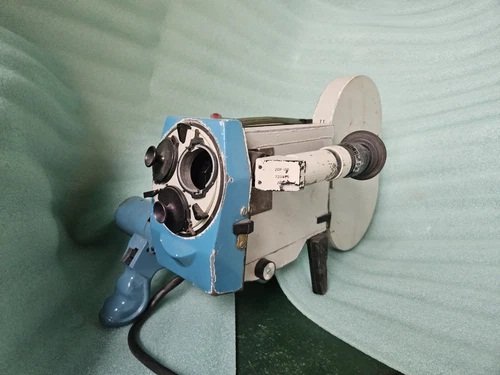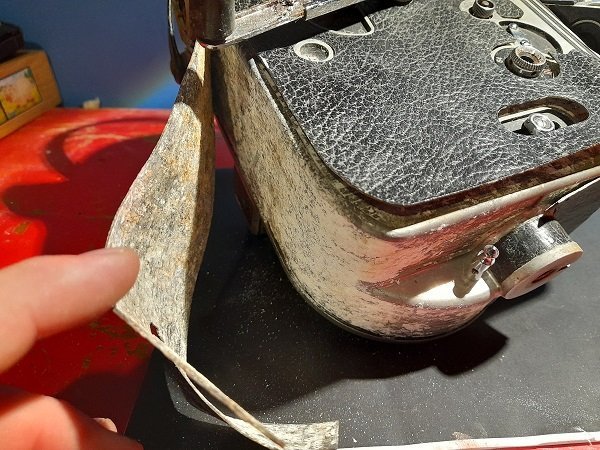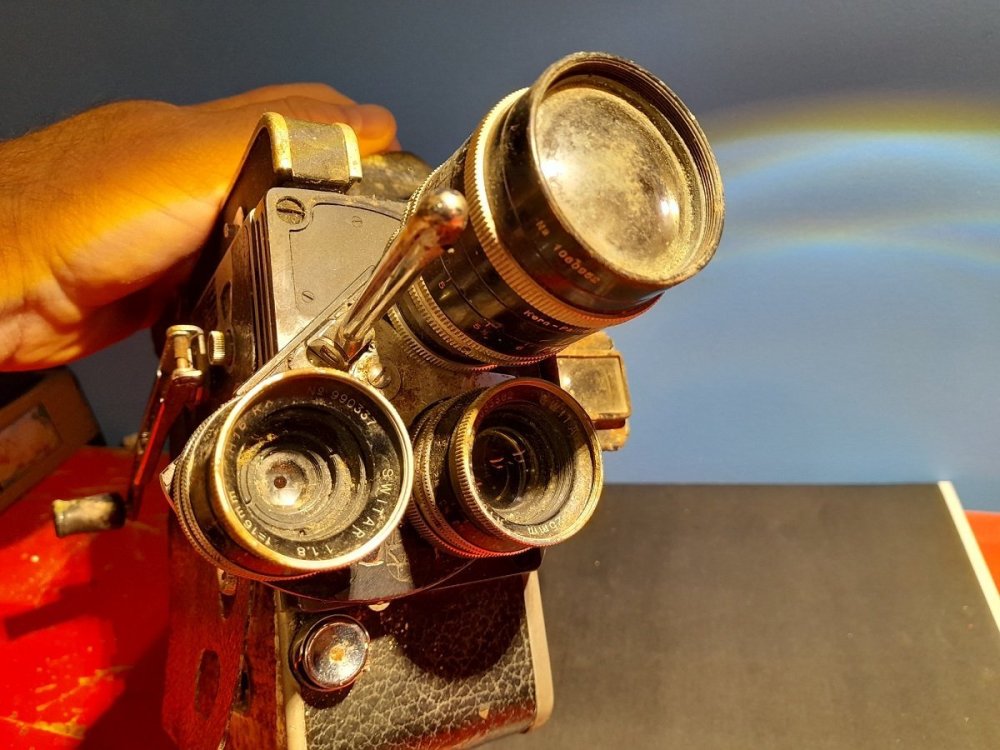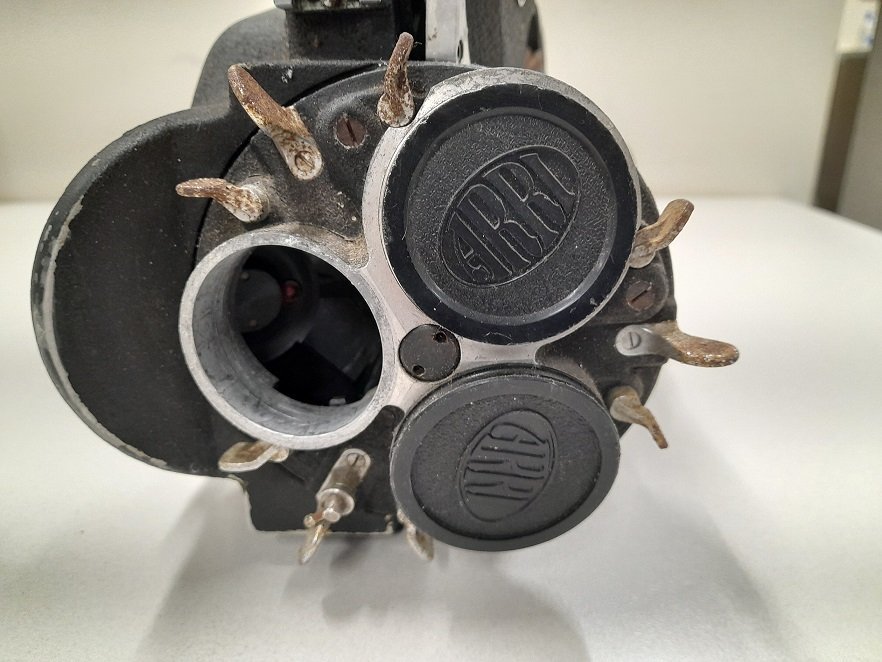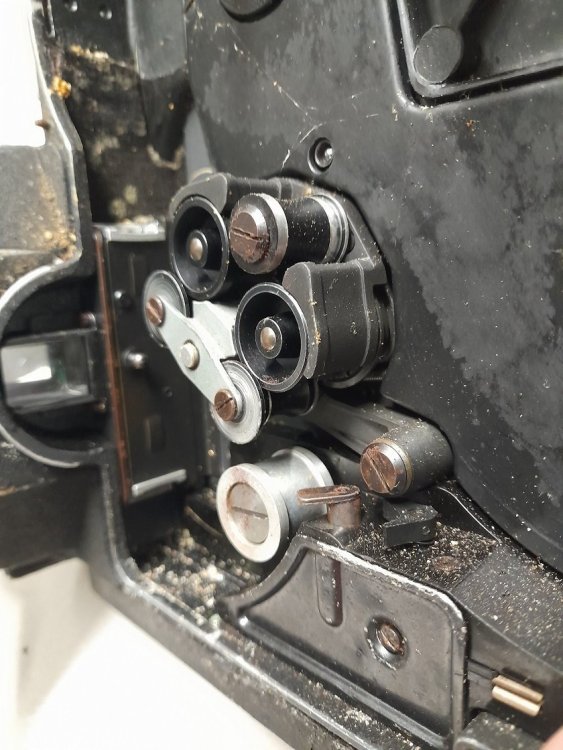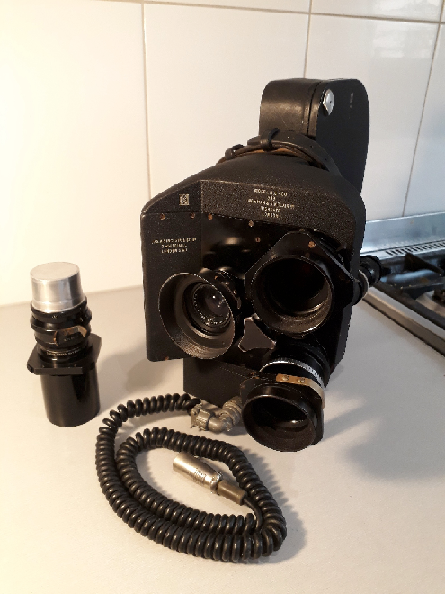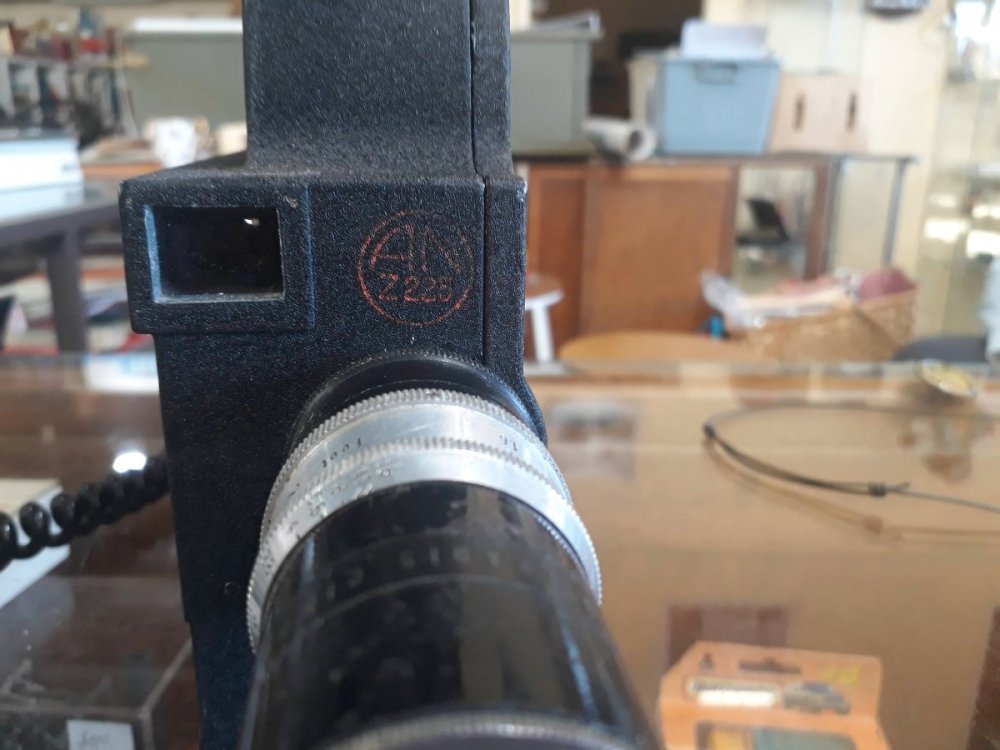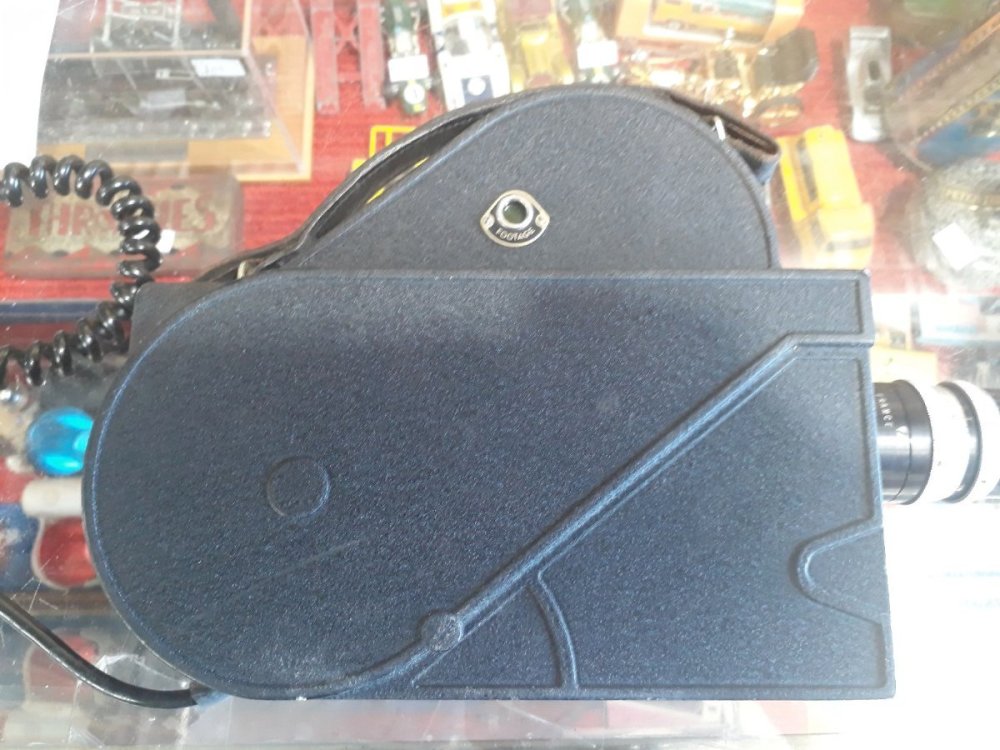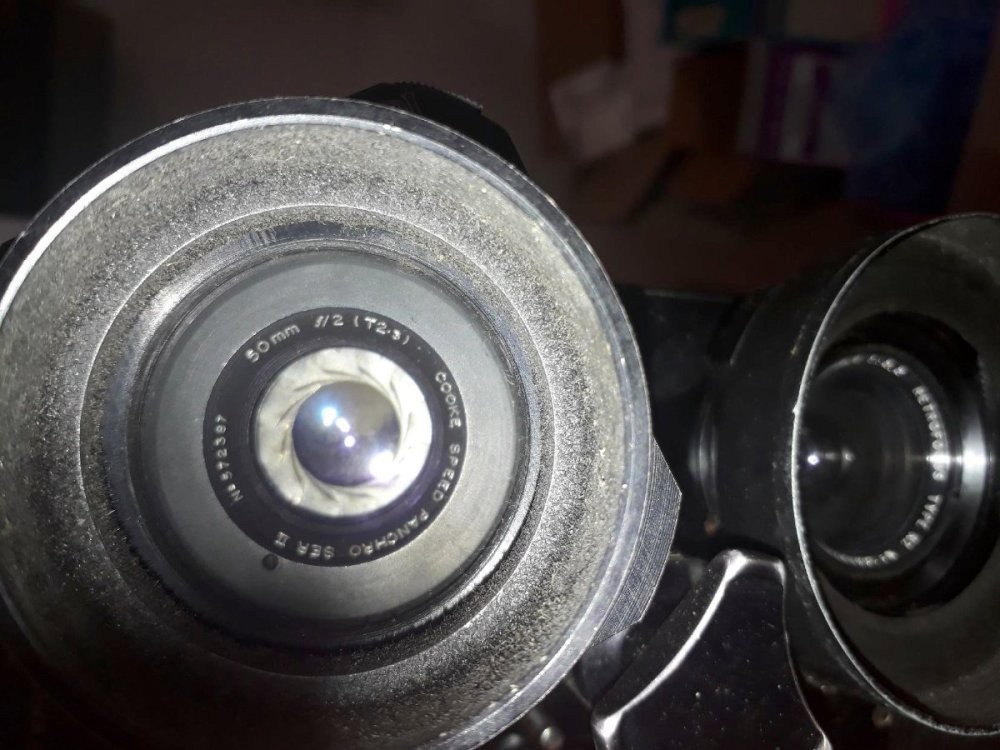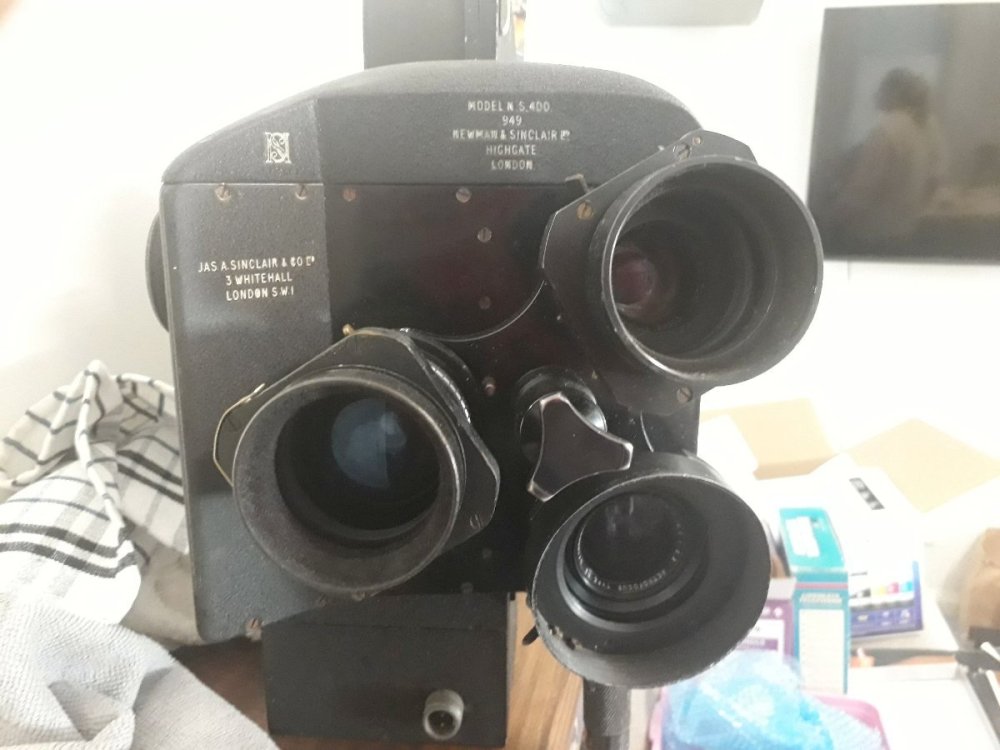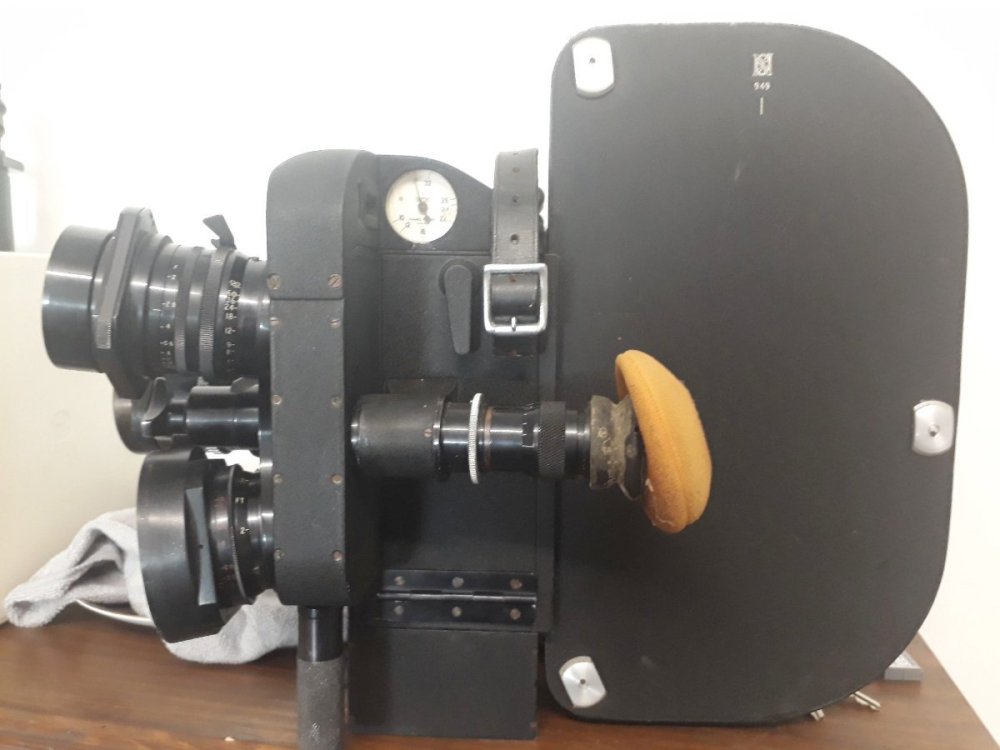-
Posts
301 -
Joined
-
Last visited
Everything posted by Gareth Blackstock
-
Hello, So I recently purchased a full Kinor 16 2SR kit. The general condition and whether it ran was unknown.... but it looked really interesting and odd. The kit came with 100 and 400ft magazines, three motors, two viewfinders, and cabling. I researched what I could, and was not surprised by how little I came across! It took hours to find out what lenses it would accept, and how rare they were. On one site, a person stated they were under the impression between 100 to 200 were made. During disassembly I have found many similarities with the Kinor CX series cameras. I also learnt how much magnesium oxidises when left without maintenance! I have created a page on my website to detail my progress towards restoring it to running condition. I have also relied on numerous websites for information, these are referenced at the top of the site page, as well as email exchanges with Olex, an definite compendium of knowledge. I also have the help of a local electrical winding business assisting me with powering up this magnesium beast.... it weighs alot... https://aussiecinerepair.wordpress.com/kinor-16-2sr/ Here is some of the information I have placed on the site: This camera series were produced from the 70’s to the 90’s and were intended for professional use, either for studio or field work, news or content creation such as advertisements. The 2SR, (2CP in Russian) was primarily designed for filming and recording sound to film, either in a studio or with a journalist. These cameras were purportedly made specifically for television studios in Russia. The 2SR and 2SR-M were made by the Moskinap factory (MKBK) in Moscow. The 2SR has a three lens turret. The 2SR-M has a single mount design. The 2SR series lens mounts are apparently the same dimesions as the KMZ SP-16 and krasnogorsk-2 cameras. The 2SR runs on 9 volts, has a shutter angle of 170 degrees. There are some sources that state early versions of the camera had a variable shutter. The camera features it’s motor in its hand control. The drives come in mains or battery options. The camera body is made of magnesium and is quite thick to assist with sound recording, purportedly coming in at 44 decibels. The camera weight is 8kg. The 2SR-M comes in at 36 decibels and weighs 9.5kg.
-
Hello, The user manual is certainly worth the download, it is a trusted download too. The Pathe Webo is a good camera. Be careful if you intend on servicing it, it is a delicate and complex process with the Pathe. Below is an updated website of the above link, same information, different layout https://aussiecinerepair.wordpress.com/pathe-webo-m-super16/
-
Hello, Sorry for the late reply, I did not get a notification of the posting. I do not remember dismantling much past what I published on the net, I am pretty sure I left the gate in place. I would be keen on seeing the results of how you go though.... Ultra 16? I am guessing you will have to re-engineer a few things... Gareth
-

H16 -barn find.... serious oxidisation..
Gareth Blackstock replied to Gareth Blackstock's topic in Bolex
Hello, Yeah I have an ultrasonic bath and use it frequently. I have never disassembled a Bolex so I am unsure how deep into it I will go. I am hoping to clean it up, have a peek under the bonnet to see if it needs rust removal, and send it off for a service. Seems Bolex's are on ebay for around $5000 so i might try sell it for those crazy prices! Gareth -

H16 -barn find.... serious oxidisation..
Gareth Blackstock replied to Gareth Blackstock's topic in Bolex
Yes, it will certainly take some hours. I do not think replacing the body is possible as I reckon there are no such part available. Some vinegar and then baking soda will work well.... and CLR... etc etc. The screws in the film chamber look like they have never been undone so perhaps the camera has never been serviced.... imagine that.. After I clean things up I will send it in for a service.... G -

H16 -barn find.... serious oxidisation..
Gareth Blackstock replied to Gareth Blackstock's topic in Bolex
-

H16 -barn find.... serious oxidisation..
Gareth Blackstock replied to Gareth Blackstock's topic in Bolex
-

H16 -barn find.... serious oxidisation..
Gareth Blackstock replied to Gareth Blackstock's topic in Bolex
-
Hello, So I recently came across an H16, reflex I think.... and I do not think I have come across a camera in worse condition.... I suspect the previous owner may have dropped it in the ocean? The oxidisation is pretty bad.... I like a challenge though, and it was cheap.... And after I clean up the outside I may dismantle to see if the inside is too far gone.... The lenses look shocking.... but I curious how they will come up with a gentle non-abrasive clean... Gareth
-
Hello, Yes, I have already said what I did with this assembly, both in the above post and on my website where I cover in more detail what I did to the camera. I will be dismantling the motor at a later date to clean and lubricate.
-
Thanks for the comments, I enjoy a challenge and I'm patient... and yes, the quality of the screws and threads made it possible for me to work on it. Simon, what do you mean the main group? Mostly I removed rust, cleaned, lubricated, and greased. I knew I would be sending the camera to be serviced so I did not disassemble the shutter movement or the film gear advance movement, or the gearing. G
-
So I recently got the oppurtunity to purchase the above camera.... for $300... which I thought was pretty good, it came with a 400ft mag and a zoom lens. Examining it I found everything to be rusted, seized, and/or oxidised. I have never come across a camera in such poor condition. Even the film chamber looked terrible. As I love a challenge I got to work! I have never worked on a Arrifflex before so i documented my progress and added it to my website. https://aussiecinerepair.wordpress.com/arriflex-16s-b-refurbish-2/ The camera was a pleasure to work on. I found two dates scratched into the shutter movement casing, I assumed they were by a service technician. I got the camera working, and very well I think. The tachometer runs steady, no noticeable vibrations that seem untoward. I will be sending it off to a local camera tech for a service . The lens I managed to mostly make useable again, peroxide and amonia to kill the fungus, some etching remains, but at least I can film test the camera without trying to buy a lens.... which are mostly insanely expensive! I also added some Arriflex information pages, thanks to some forum members who gave me permission to post copies of their work onto my site. As an added note, the reason I have never come across an Arriflex to fix before, is that they have always been too pricey for my wallet. Mostly I have only been able to afford 16mm cameras that are broken. Repairing them I have enjoyed more than i thought. The benefit of not being able to afford the main camera makes, like Eclair, Arriflex, CP, Bolex, etc. is that I bought lesser known cameras like Kinor and Pentaflex, which by the way I think are awesome under rated cameras. These cameras are still coming up frequently, sadly they are getting far too over priced themselves! I am looking forward to filming with the camera, even if it is noisier than a Pentaflex! Gareth
-

Kinor 16 CX-1M & 2M English Manual available
Gareth Blackstock replied to Gareth Blackstock's topic in Russian Gear
Reading English posts is even more helpful when you take the time to read it. Judging from your post, you failed to read the original post. Try again. Then, translate the original. Then post it. You will be perhaps the 3rd person in 70 years to do it. So you should'nt knock people who try to fill an obviously very big gap in knowledge. -

Newman and Sinclair NS400 35mm cine camera
Gareth Blackstock replied to Gareth Blackstock's topic in 35mm
Just a quick update. While I was cleaning the camera up and getting it running I took lots of photos and explored as much as I could. Mostly as I found virtually no info on the net, and I really like exploring a new camera.... so I figured I would use the opportunity to put the photos online, with a brief description about the camera and what I found. I could not find a manual anywhere, so hopefully from my descriptions of the various functions, helps anyone else who comes across a Newman Sinclair camera. https://aussiecinerepair.wordpress.com/newan-sinclair-ns400/ -

Newman and Sinclair NS400 35mm cine camera
Gareth Blackstock replied to Gareth Blackstock's topic in 35mm
Hello, Yeah, I was quite careful with running the camera. beforehand I removed the right hand side panel of the camera body and got a visual on all the gears, everything looked well coated with grease. I thought perhaps a little over greased, but looking closely I found no buildup of hardened grease, and no clumps of greasy dust. I also made a short video of the pull down claw, gate lifting slowly, and shutter in background. I manually turned the camera. So I am unsure if it has had charmed life of hardly been used, or has been maintained in the last few years. As the camera is not mine, I resisted the urge to get more covers off and peer into the camera's innards... -

Newman and Sinclair NS400 35mm cine camera
Gareth Blackstock replied to Gareth Blackstock's topic in 35mm
-

Newman and Sinclair NS400 35mm cine camera
Gareth Blackstock replied to Gareth Blackstock's topic in 35mm
And I took some quick clips of the film chamber while the camera was running, one clip with film, one without. The clips were made at different motor speeds -

Newman and Sinclair NS400 35mm cine camera
Gareth Blackstock replied to Gareth Blackstock's topic in 35mm
So a quick update.... the owner of the camera kit has asked me to sell it for him. I was keen as it gave me the opportunity to have a really close look at the camera, take lots of photos, and get it running. I am hoping it sells to a film shooter... but I reckon the owner will be happy to get some money for it. I have posted it on three popular sites, sadly I cannot list it here. If people have more info on this interesting and well made camera, please let me know. Gareth -
Hello, Simon So have you come across these types of adaptations before? Do you know what type of voltage? I am assuming 50's because the type of cable seemed popular in the 50's and 60's Thanks
-
-
So while I was looking in a second hand shop at cameras I came across a Kodak model E. When I looked closer at it, I noticed a few odd things.... it has a power cable...... it has no speed selector, no winding handle or cavity in the casing for a winder to be inserted, and no run lever. It has no special mounting lugs, like may be used if it was mounted in an aircraft or mounted as a security camera... really odd. I remember I saw a Bolex advertised once that was similarly 'bare bones' and the seller stated the camera was an early speed camera that was activated mechanically. I am half tempted to buy this camera just to examine it closer... perhaps a 12volt Kodak model E would be quite useable? There is a paint stamp on the front of the camera 'AN z225' perhaps a local camera shop that modified the camera.
-

Newman and Sinclair NS400 35mm cine camera
Gareth Blackstock replied to Gareth Blackstock's topic in 35mm
-

Newman and Sinclair NS400 35mm cine camera
Gareth Blackstock replied to Gareth Blackstock's topic in 35mm
-

Newman and Sinclair NS400 35mm cine camera
Gareth Blackstock replied to Gareth Blackstock's topic in 35mm
I returned to the shop, and while the guy I spoke to earlier was not there, I left his wife print outs of the information I could find. I took a few more pics. It seems in good condition. Although he has a price tag on the kit for AUD$3600, I suggested to his wife it may be worth much more, especially as it has two Cooke Panchro series II lenses attached, a 50mm and 75mm one. I had a quick look at the lenses and they appear, without cleaning them, to be just a little dusty. The 75mm one has a yellowish tint to it. Anyway, I look forward to hearing back from the owner, not as I am looking to buy it, mostly so I can tell him he has a very cool camera that may be worth much more than $3600 -

Newman and Sinclair NS400 35mm cine camera
Gareth Blackstock replied to Gareth Blackstock's topic in 35mm
Hello, Simon Thanks for offering some valuable info on this camera. At least I can tell the owner it most likely runs on 12v. Cheers, Gareth



